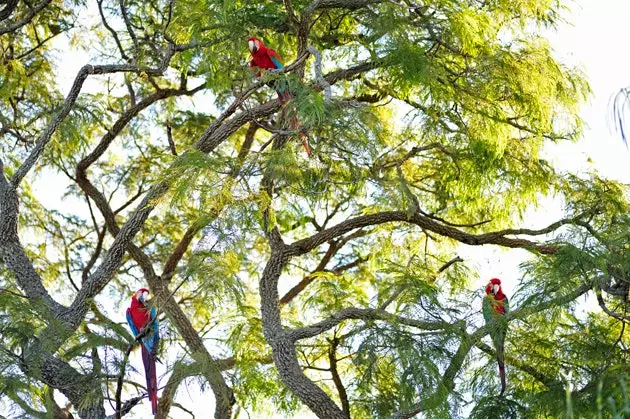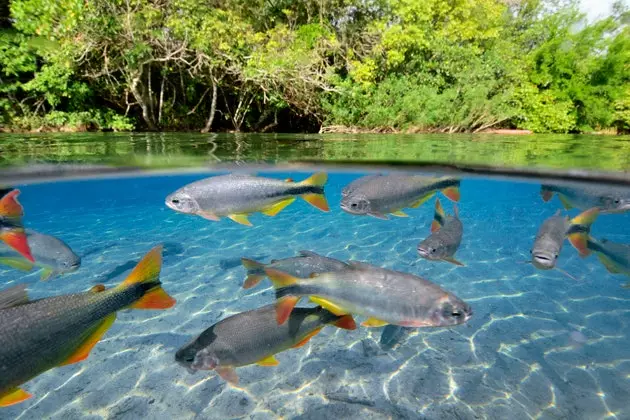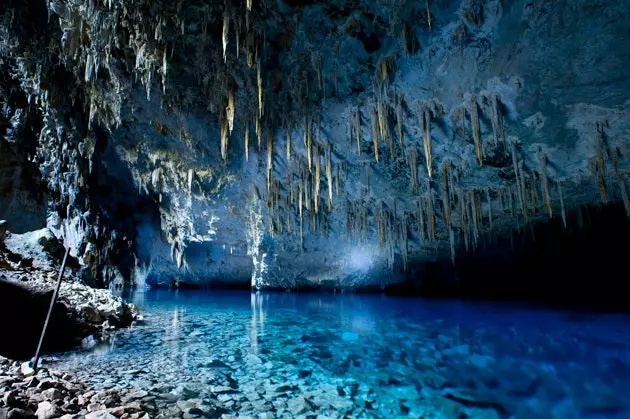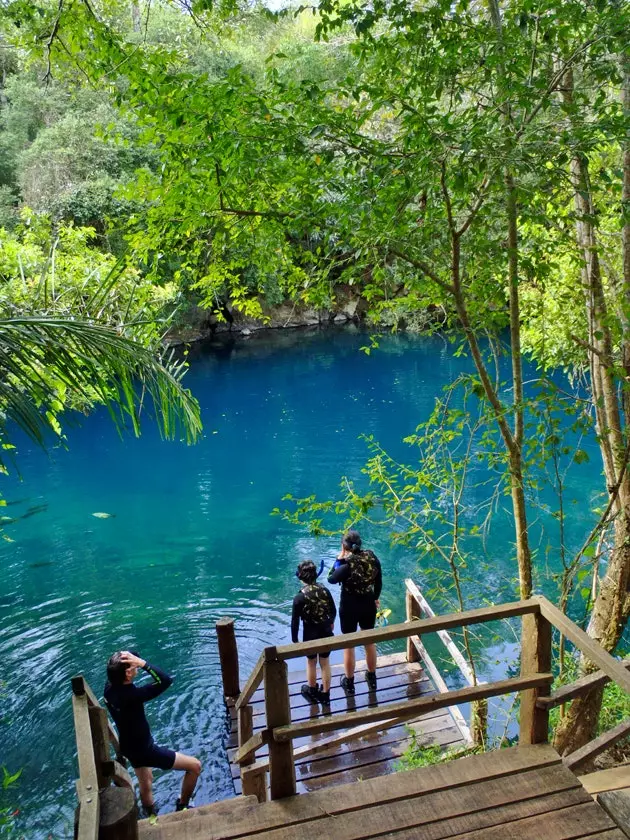
Everything is beautiful in Bonito
The short history of the municipality of Bonito it just symbolizes how inhospitable and spectacular this place is. Having been forgotten by colonization allowed it to remain intact, like a no man's land between Paraguay and the big cities of Rio de Janeiro and São Paulo. And that today is a big plus in its favor, because the natural wonders that surround it, in addition to being very photogenic, are a magnet for ecotourism. And since in Brazil they are very careful with this philosophy of preserving until the last consequences, they pull an ecological tax and restrictions to avoid overcrowding. As in Fernando de Noronha, Bonito imposes a fee on the visitor and requires that all tourist activity be carried out accompanied by a guide.
But don't discourage me, it's not that bad. Bonito is a very welcoming city, with an endless number of nice little hotels, run by nice men and women who make nice food . And, of course, they offer mandatory excursions for anyone who has crossed half the world to get here. Everything that follows is a parade of natural spectacles and unique experiences in the closest thing to a mountain range in the entire country: the Sierra da Boquena.

Here everything invites to the dip
Let's start by the call Anhumas Abyss , the largest submerged cave on the planet . To access it, a little prior training is required to assimilate the basics of rappelling. And if not, there is no way since the only entrance is a crack at the top. But the panorama is worth it: a lady cave with its stalactites, its stalagmites and an interior river that reaches 80 meters deep. But, above all, a feeling of being an explorer, of stepping on a place where no one has been before, without explanatory signs or marked out paths.
A tad more accessible are ** the caves of San Miguel **, although to enter you also have to pay the toll of overcoming vertigo by following a path that hangs from the trees. Not everything was going to be easy. The end of this path are other caves, a little more familiar and touristy than the Anhumas abyss, although in this case the calcareous formations are more capricious and fun.
The cave that takes the Oscar the one of the Blue Lake . The key is in its name, and it is that the impressive color of the water that floods it makes it special and also makes it a kind of sanctuary. A place that is practically impossible to explore, so there is nothing better than letting yourself be embraced by its striking contrasts of a ceiling that threatens to fall and puncture and a floor full of raging crystal clear water.

The cave of the Blue Lake
But not everything is going underground in search of the center of the earth that Jules Verne imagined. In Bonito there are plenty of reasons to put on your swimsuit and take off your overalls for a dip . They are fun and exciting baths, not suitable for tanorectic foreigners or beach bar drunks. The Sucuri River is so amazing that it has a website of its own. The fun of this exotic place is to arm yourself with a life jacket and let yourself go as you float down the calm current. But not playing dead, but looking down, using a snorkel and goggles to contemplate a background worthy of a BBC documentary , but seen on something better than a state-of-the-art television. Flotation can last up to an hour that flies by. Well, rather, floating. The other alternative to wear the bikini is the Río Formoso Ecological Park, where there are also floating activities, rafting and one can bathe at ease under a waterfall.
Well, after so much movement (pleasant, yes, but movement), Bonito offers one more reason to leave everything and stay there forever: its bizarre and multicultural gastronomy . The fact of being at a crossroads of ethnological influences has a very neat result, a mixture of the cattle culture and the daring flavors of the jungle. Here, asado is served with cassava and iced mate (known as tereré) is drunk directly from a gourd. The ultra-exotic moment is not lacking with the piranha soup, although the most discordant element is the sobá , a type of pasta they inherited from early Japanese immigrants. The nights are embraced with the Taboa, a kind of local Cachaça made with cinnamon that refreshes and cloys in equal parts.

Here are plenty of reasons to put on your swimsuit and diving goggles
